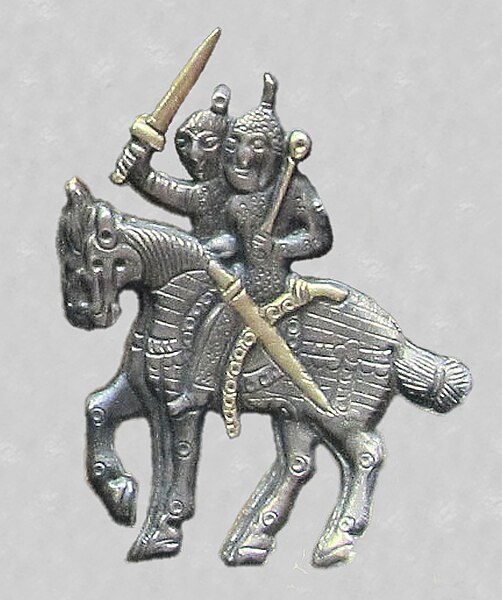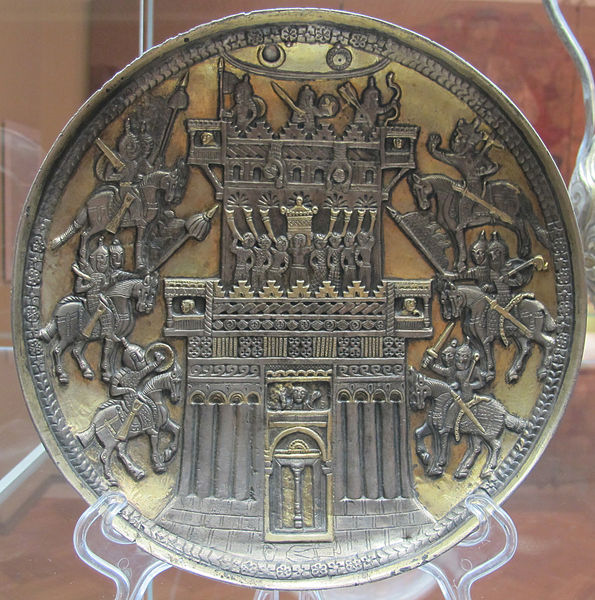Sart is a name for the settled inhabitants of Central Asia which has had shifting meanings over the centuries.
Two Sart men and two Sart boys posed outside, in front of wall, in the early 20th century.
Sart woman wearing a paranja (Samarkand, between 1905 and 1915)
The Karluks were a prominent nomadic Turkic tribal confederacy residing in the regions of Kara-Irtysh and the Tarbagatai Mountains west of the Altay Mountains in Central Asia. Karluks gave their name to the distinct Karluk group of the Turkic languages, which also includes the Uzbek, Uyghur and Ili Turki languages.
Armoured horsemen on the Anikova dish, Semirechye, c. 800.
The Anikova dish: a Nestorian Christian plate with decoration of a besieged Jericho, by Sogdian artists under Karluk dominion, Semirechye. 9th-10th century, copied from an 8th century plate with designs and military equipement related to Penjikent.
The Grigorovskoye Plate: a Nestorian Christian dish with Syriac inscriptions, from Semirechye, 9th–10th century CE, created under Karluk dominion.
The Kara-Khanid ruler "Ilig Khan" on horse, submitting to Ghaznavid ruler Mahmud of Ghazni, who is riding an elephant, in 1017. They agreed to partition former Samanid territory along the Oxus river. Jami' al-tawarikh, circa 1306–14.






